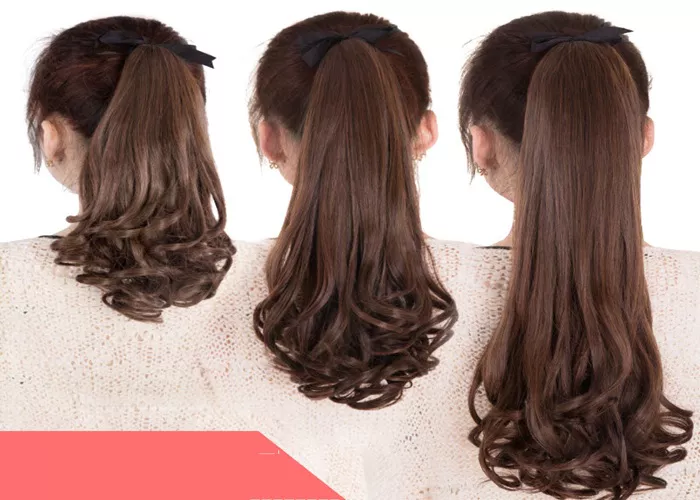Curly hair is nature’s intricate sculpture, shaped by genetic codes and environmental adaptations. Each coiled strand emerges from asymmetrical follicles, twisting as it grows to form spirals that range from loose waves to tight zig-zag patterns. This structural complexity serves evolutionary purposes—tight curls protect scalps from intense sunlight in tropical climates, while loose curls aid heat dissipation in temperate zones. Modern trichologists have discovered that curly hair’s raised cuticle layers act like shingles on a roof, allowing moisture to enter quickly but escape even faster. This explains why hydration remains the eternal challenge for curly-haired individuals.
The curl’s architecture also impacts its behavior. Spiraled strands tangle more easily due to increased surface contact, while their natural volume creates buoyancy that defies gravity. Unlike straight hair that lies flat, curls form multidimensional shapes that change with humidity, product use, and even emotional stress. Recognizing these inherent traits is the first step in developing a respectful relationship with curly hair—one that prioritizes collaboration over control.
Curly Hair Care: A Ritual of Respect
Caring for curls demands a shift from conventional beauty routines to mindful rituals. Traditional shampooing methods often strip natural oils, leaving curls parched and rebellious. The modern approach embraces pre-wash treatments with oils like babassu or grapeseed, which form a protective barrier against harsh cleansers. Cleansing itself becomes an art—using sulfate-free formulas that gently remove buildup without disturbing the scalp’s microbiome. Conditioners transform into liquid gold, applied section by section with prayer hands to smooth lifted cuticles.
Drying techniques make or break curl definition. The ancient practice of “plopping” (wrapping wet curls in microfiber) gains scientific validation, as studies show it reduces frizz by 60% compared to towel-rubbing. Diffusers with intelligent heat sensors prevent protein damage while encouraging curls to set in their natural formation. Nighttime care evolves into a sacred routine—silk pillowcases that prevent friction, loose pineapple updos that preserve root volume, and satin bonnets that maintain moisture balance.
Signature Styles Through the Ages
Historical hairstyles reveal humanity’s long fascination with curls. Ancient Egyptians sculpted tight coils with honey mixtures, while Renaissance aristocrats piled elaborate ringlets high as status symbols. Today’s styles blend this rich heritage with modern practicality. The “curly bob” resurfaces with contemporary twists—uneven layers that create organic movement rather than rigid symmetry. Shoulder-length “shag” cuts channel 1970s freedom while incorporating face-framing tendrils that soften angular features.
For formal occasions, curls embrace sophistication through polished chaos. Half-up styles gather crown curls into artful knots, allowing the rest to cascade freely down the back. Braid-and-twist combinations add structural interest without compromising natural texture. The true revolution lies in red carpet trends—celebrities now flaunt wash-and-go curls glazed with botanical gels, proving that meticulous styling can coexist with authentic texture.
The Cultural Rebirth of Curly Pride
For decades, chemical straighteners and hot combs dominated beauty industries, framing curls as problems needing correction. The 21st century witnesses a cultural reckoning—a global movement embracing natural texture as a crown rather than a burden. Social media becomes the curling iron of change, with hashtags like #CurlyGirlMethod uniting millions in shared wash-day experiences. Educational initiatives in schools teach children to care for their curls, preventing childhood damage from harsh brushing or improper products.
The workplace undergoes quiet transformation. Corporate grooming policies now recognize braids, afros, and defined curls as professional. High-fashion runways feature models with untouched silver curls, celebrating the beauty of natural aging. This cultural shift extends beyond aesthetics—it’s a reclamation of identity, particularly for communities historically pressured to conform to Eurocentric beauty standards.
The Future of Curly Innovation
Technology and tradition converge in curly hair’s next chapter. Biotechnology firms develop “smart conditioners” with proteins that repair bonds based on real-time damage assessments. 3D-printed scalp treatments deliver customized nutrient cocktails to individual follicles. At home, AI-powered apps analyze curl patterns through smartphone cameras, suggesting personalized product cocktails and cut designs.
Sustainable solutions gain momentum. Ocean-friendly gels derived from seaweed replace plastic-packed products. Waterless cleansing powders reduce environmental impact while maintaining curl health. Perhaps most revolutionary is the growing acceptance of “curl evolution”—the understanding that texture naturally changes with hormones, age, and climate, requiring adaptable care routines rather than rigid regimens.
Conclusion
Caring for curly hair ultimately becomes a meditation on self-acceptance. Each coil’s spring, each wave’s sway, tells a story of genetic heritage and personal journey. The true mastery lies not in achieving perfect definition, but in understanding that frizz is the curl breathing, shrinkage is its memory, and volume is its joy.
Modern curl wisdom teaches us to work with hair’s inherent intelligence rather than against it. This means celebrating the wild days when humidity transforms careful styles into glorious fountains of volume. It means recognizing that a “bad hair day” often stems from society’s unrealistic standards, not actual hair flaws.
As we enter an era where salons offer curl therapy sessions and textbooks include trichology chapters, the curly-haired population stands at a historic crossroads. The tools for transformation exist—scientific knowledge, cultural acceptance, and innovative products. What remains is the courage to look in the mirror and see not hair to tame, but a masterpiece to nurture. For in every twist and turn of our curls, we carry ancestral wisdom and future potential—a living testament to beauty that cannot, and should not, be contained.
Related topics:
6 Stylish Short Curly Hairstyles for Women Over 50 Who Wear Glasses
How to Make Your Curly Hair Silky: A Complete Guide to Achieving Smooth, Shiny Curls
How to Style Curly Hair Bangs: A Complete Guide to Perfect Curls and Fringes


